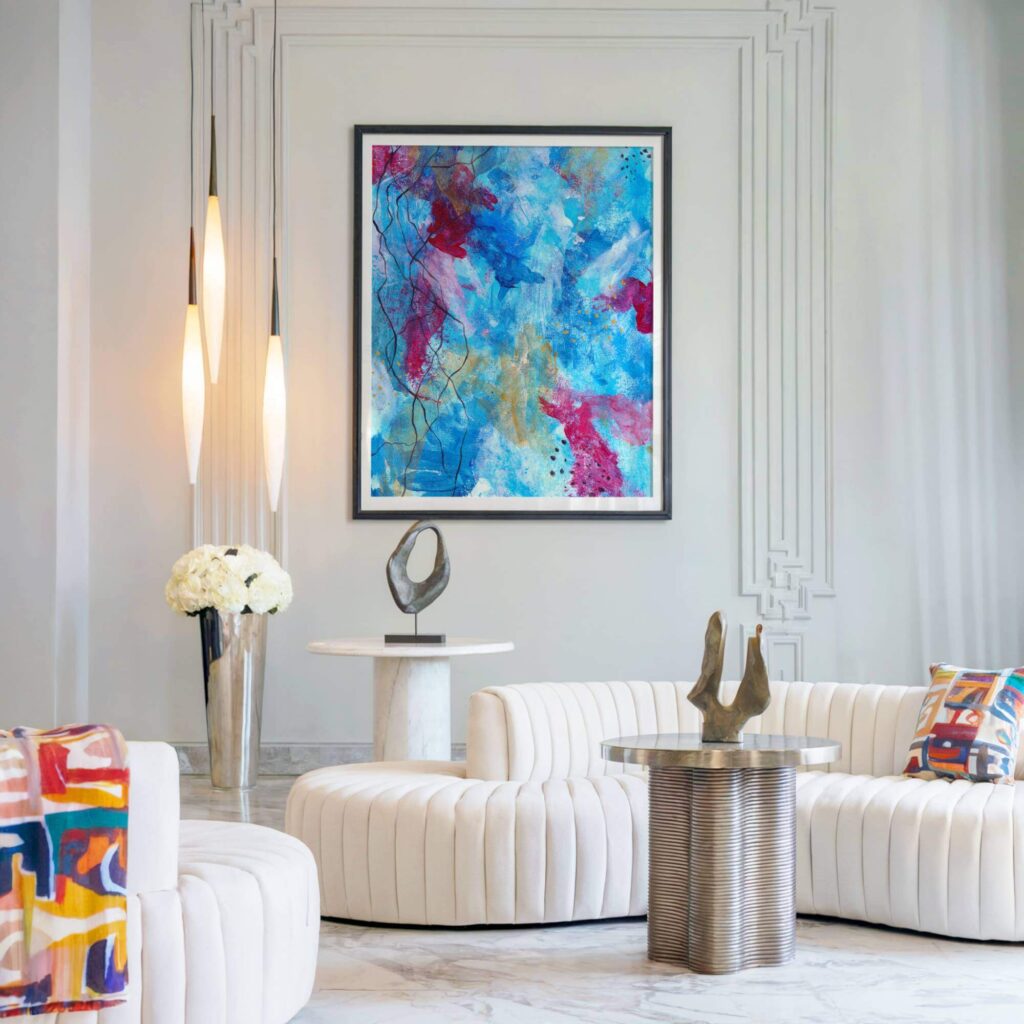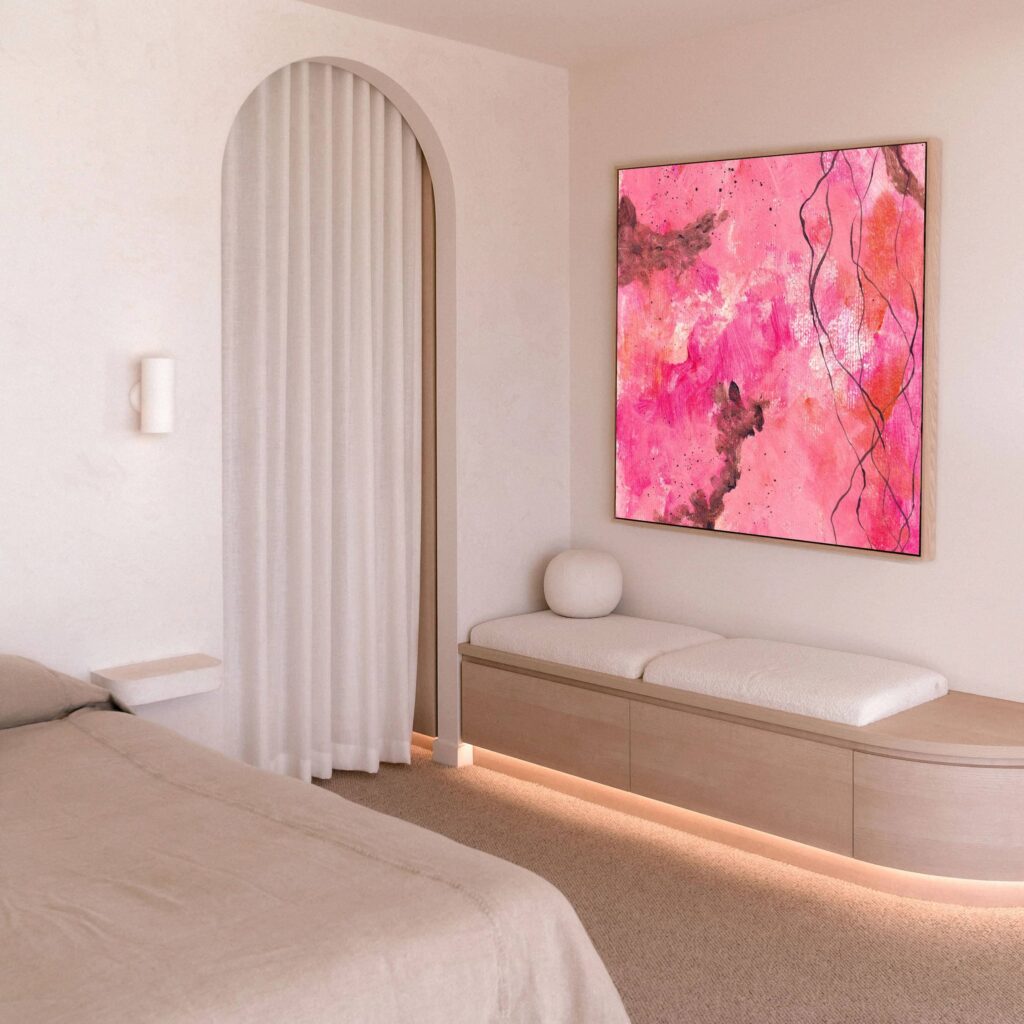How Art Transforms Spaces And Emotions
Art is not an accessory. It’s a force. One that alters the emotional weight of a room, not just its appearance.
Step into a space with the right piece, and you’ll feel it before you register what you’re looking at. The atmosphere softens. The breath deepens. Something shifts. That’s not a trick of light or style, it’s resonance. It’s the energy that art carries when it’s made with intention.
This isn’t about filling walls. It’s about filling space with meaning. Art that’s emotionally present doesn’t just decorate a home. It transforms the way you live in it.
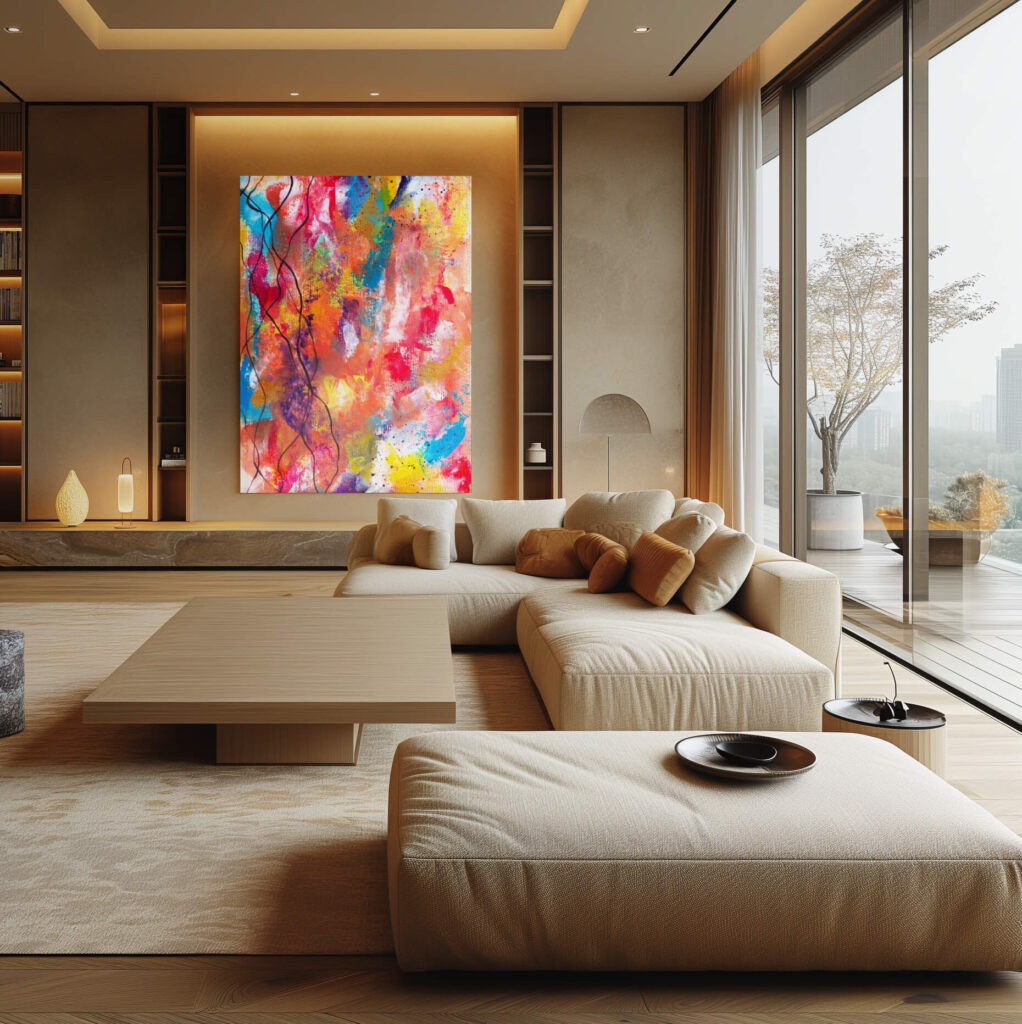
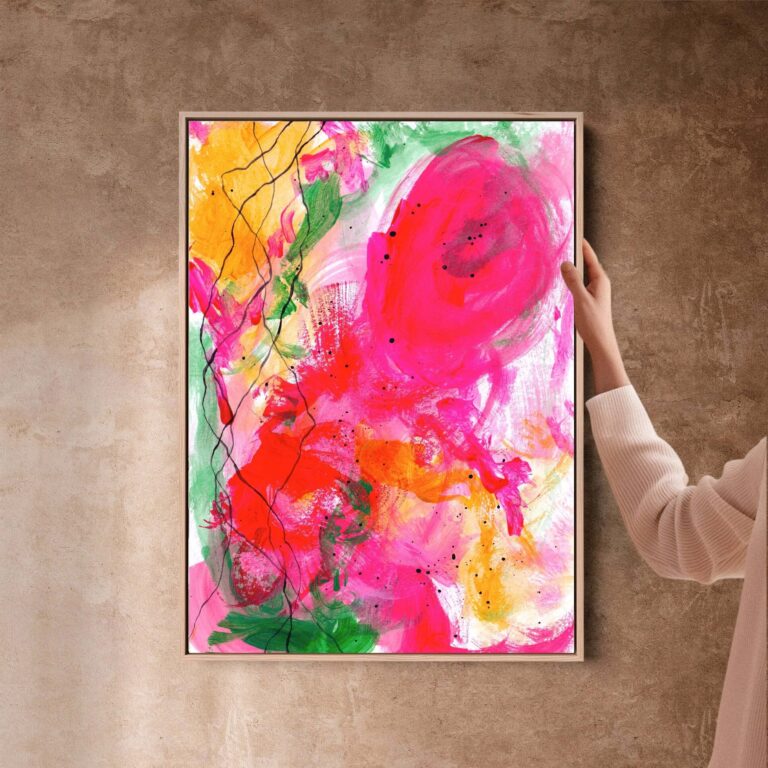
The role of light in art
Light doesn’t just illuminate. It changes how art lives. It can create intimacy or openness. Stillness or movement. In abstract work especially, light brings out layers that aren’t visible at first glance. A soft sheen of silver that wasn’t noticeable yesterday might catch the morning sun today and suddenly feel like breath.
The way light interacts with a painting can make a space feel warm, expansive, or quietly powerful. And that’s why choosing art isn’t just about what’s on the canvas. It’s about where it sits, how it’s lit, and what it gets to whisper into the room.
If you’ve ever walked into a room and felt immediately more grounded, there’s a good chance the light and the art were speaking to each other.
In my own pieces, especially those created for more introspective rooms, I think about how light will hit them throughout the day. How it will move across the surface. Whether it will reveal something quietly in the morning, and something else entirely at dusk. Art doesn’t need to glow to be luminous, it just needs to hold something real enough that the light wants to stay with it.
How Colour Changes More Than Just Mood
Colour isn’t decoration. It’s language.
The shades you invite into a space will speak long after you’ve stopped noticing them. Deep blues can calm a racing mind. Ochres can warm a room that feels too sterile. Greens can bring breath back into a hallway that always felt tight. But it’s never just about the colour wheel. It’s about what each tone holds for you.
In emotional abstract art, colour isn’t chosen for harmony or trend. It’s chosen for weight. For memory. For the sensation it carries.
When a client tells me they want something peaceful, we’re not just reaching for pastels. We’re reaching for clarity. Stillness. Whatever tones help their body feel safe in the room they spend most time in. That might be soft teal. That might be a layered slate grey with just enough light in it to feel like a pause.
That’s the kind of presence you can’t get from Pinterest palettes.
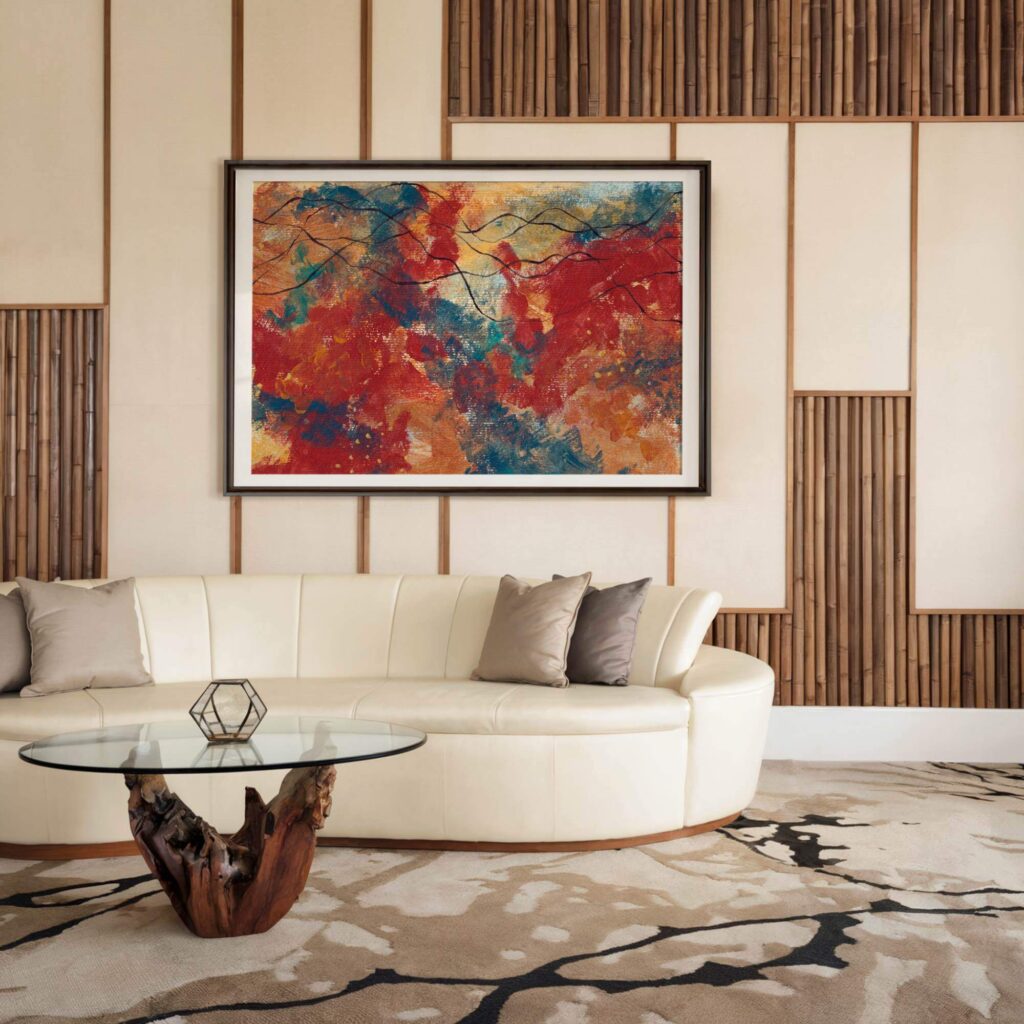
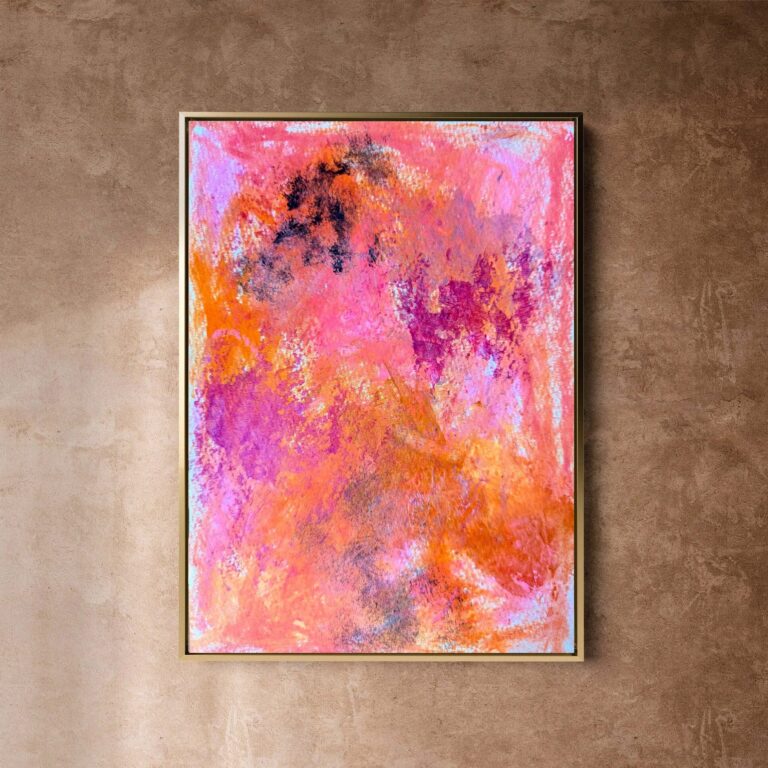
Abstract Art and the Truth of Modern Spaces
Modern design often leans towards clean lines and simplicity. But emotional life isn’t tidy. That’s where abstract art becomes essential. It doesn’t disrupt minimalism, it deepens it. It invites texture into sleekness. Feeling into functionality.
A space doesn’t become meaningful just because it looks good. It becomes meaningful when it reflects you. Not just the curated version of you, but the one that’s real and present in the quiet moments.
That’s why abstract art belongs in modern spaces. Because it makes them honest.
Personal Expression Isn’t Optional, It’s Essential
There’s something deeply wrong with the idea that art has to “match the vibe.” As if art is there to perform for your home, instead of holding what matters inside it.
Real art, the kind made with emotional intention, isn’t about aesthetics. It’s about identity.
Whether it’s a commissioned piece that mirrors a part of your story, or a print that quietly pulls you back to yourself every time you walk past it, the point isn’t to impress. It’s to express. And that expression doesn’t have to be loud. It just has to be yours.
Some of the most meaningful work I’ve created came from clients who didn’t have the words. They just knew they needed something that helped them stay present during a difficult shift. A piece that let them feel seen, even if no one else understood it.
That’s what personal expression through art really looks like. It’s not a statement. It’s a reckoning.
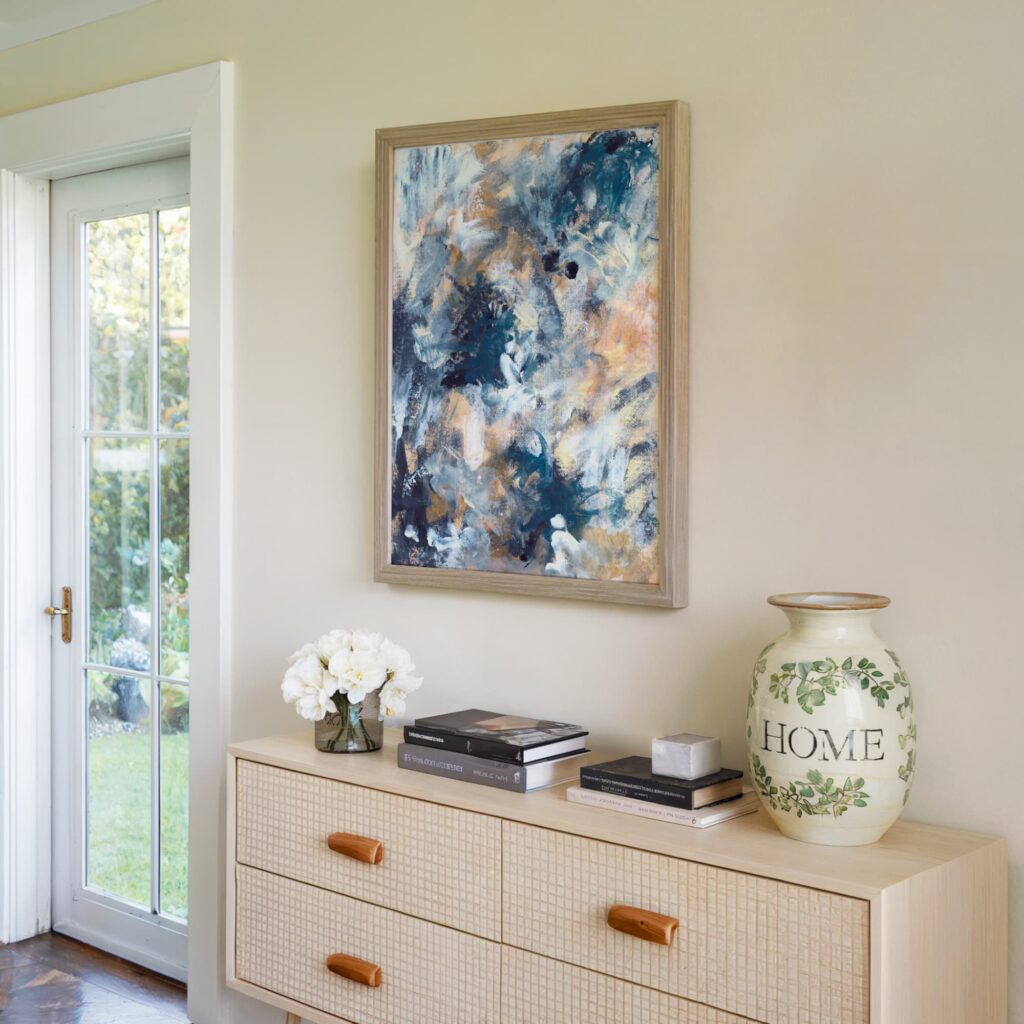
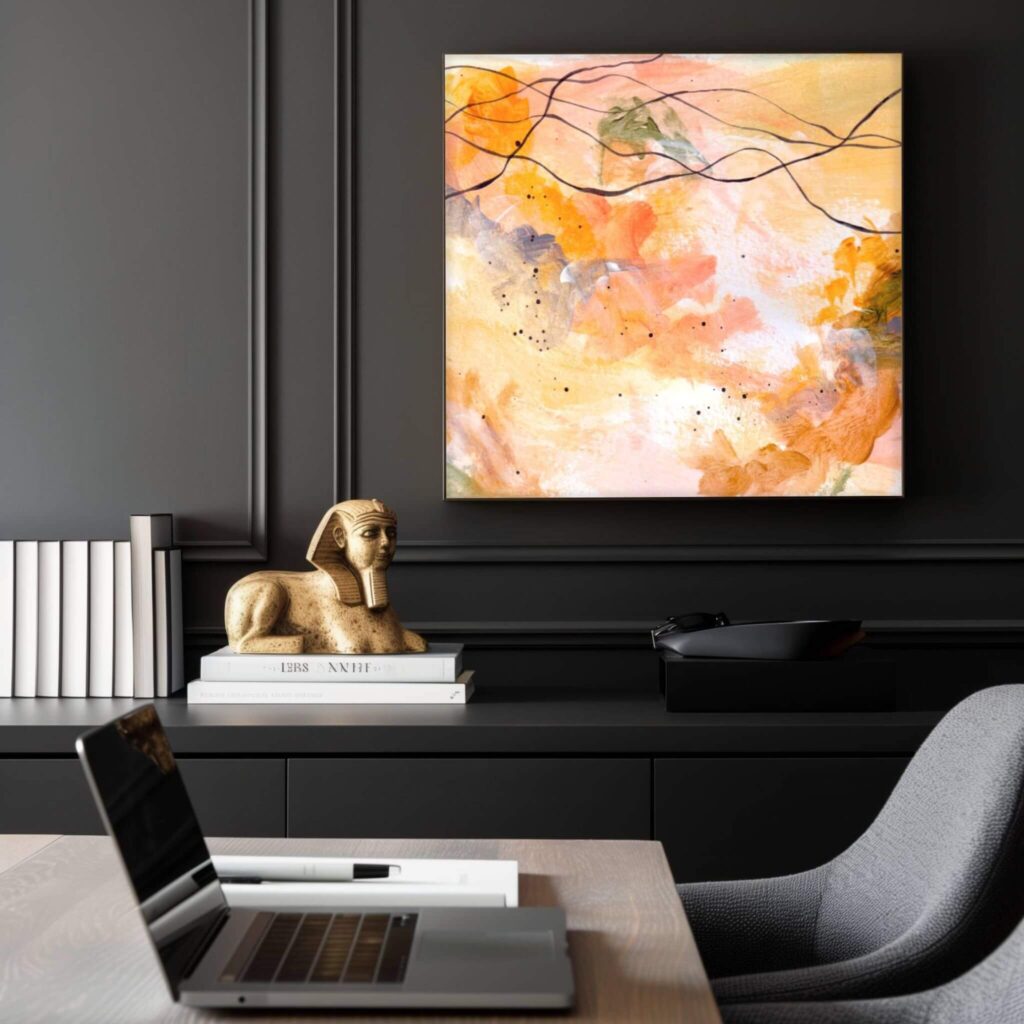
Display Isn’t an Afterthought, it’s Part of the Story
Where and how a piece is placed completely changes the story it tells. Too high, and it distances. Too crowded, and it loses its breath. Art needs space to resonate. Not because it’s fragile, but because it’s speaking.
I always tell clients, place the piece where you need its energy the most. If it’s grounding, let it anchor your morning. If it’s reflective, give it room where silence lives. If it’s bold, let it break the monotony of an overly tidy hallway.
Lighting should honour the work, not drown it. Framing should support the texture, not compete with it. And above all, the placement should serve the emotion the piece is carrying, not just the symmetry of the room.
Art Is Not a Luxury. It’s a Legacy.
The idea that art is indulgent needs to go.
Art is one of the few things that grows with you. That bears witness over time. That stays still while your life evolves around it.
When you bring a piece into your space that actually means something, you’re not just buying décor. You’re creating continuity. Memory. A container for the emotional seasons most people skip past. And when that piece is chosen or commissioned with intention, it becomes part of your legacy.
You’ll forget where the furniture came from. But you’ll remember what you were carrying when that painting entered your life. And that’s what stays.
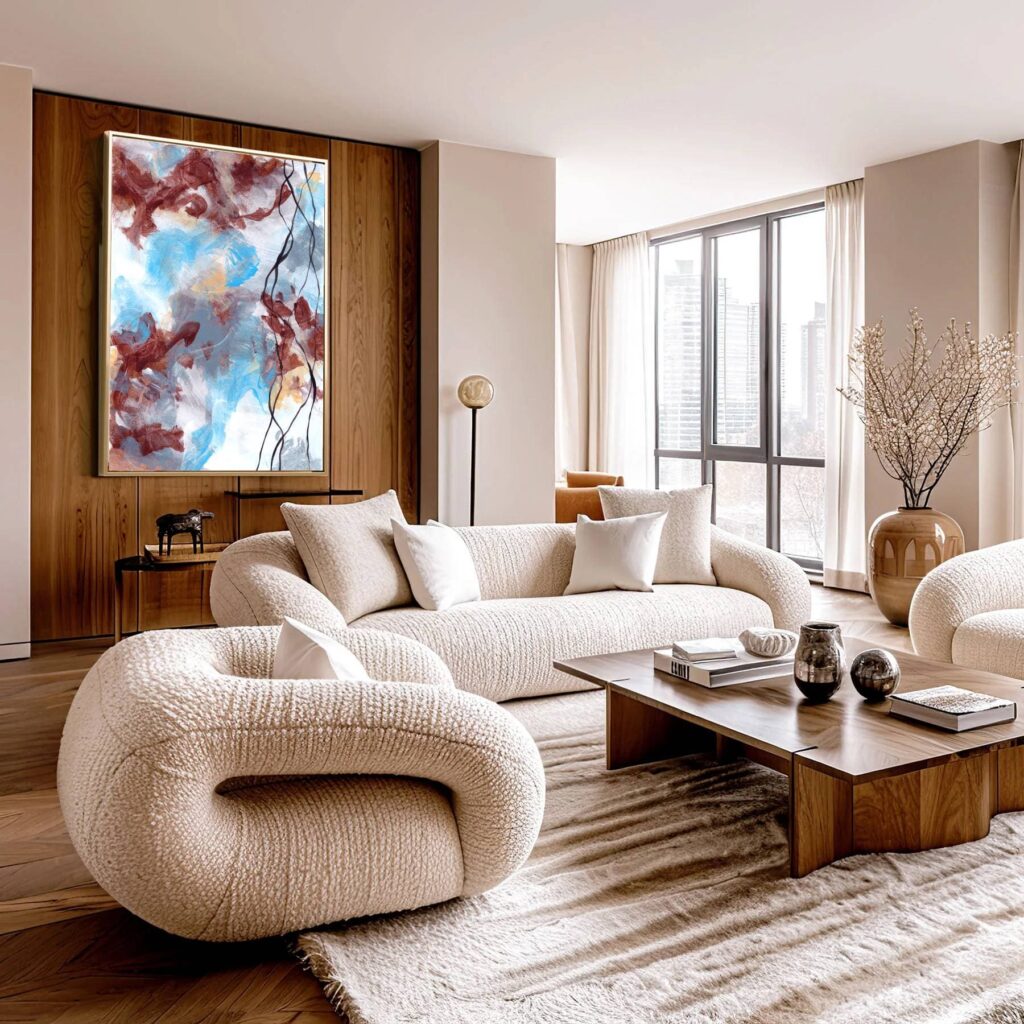
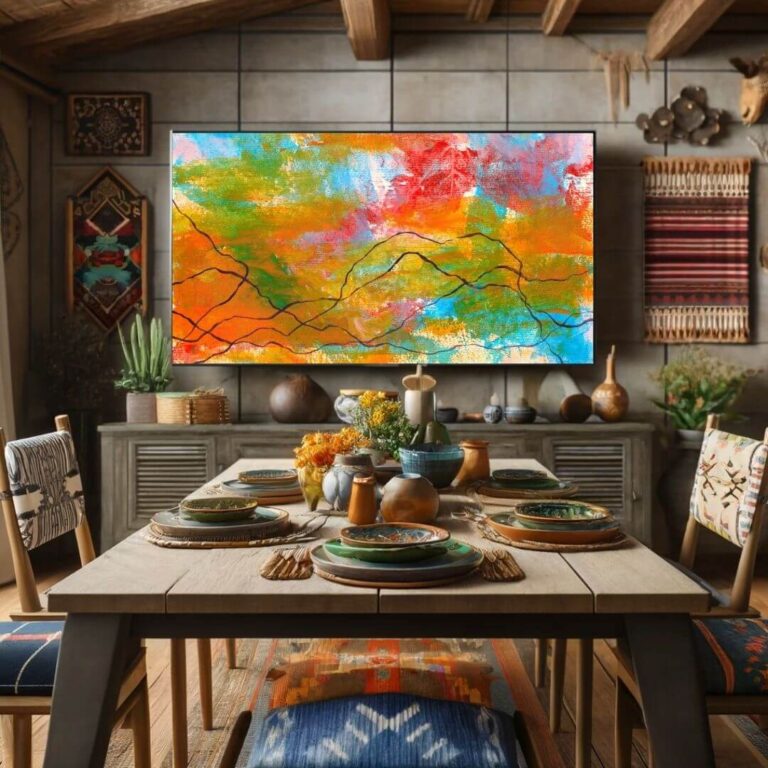
Displaying Art with Intention: Placement as Emotional Architecture
Where you place a piece of art isn’t a logistical decision, it’s a psychological one. A painting isn’t just something to be seen. It’s something to encounter. So the question becomes: Where in your life do you need that encounter most?
Entryways become energetic signatures, what do you want to be greeted by?
Bedrooms hold restoration. Art here should soothe, not stimulate.
Workspaces need anchoring, something to return your mind to presence when the noise builds up.
Art placement is about emotional utility. It’s about designing a space that works on you, not just for you.
Lighting as Emotional Amplifier
Light doesn’t just illuminate. It transforms. A warm wash across a textured canvas can turn an already powerful piece into something sacred. Cold light might sharpen detail, but warm, indirect light makes art breathe.
Use directional lighting to create gentle emphasis without flattening the piece.
Avoid harsh downlights, they erase subtle emotion.
Let natural light lead where possible, morning and evening light tell different stories.
Light is the unseen collaborator in your collection. Honour it, and the work will deepen.
Investing in Emotion, Not Just Aesthetics
Buying art isn’t just an aesthetic decision. It’s an emotional investment, and one of the few that holds value both financially and energetically.
Yes, certain pieces may appreciate in value. Yes, original or limited works retain exclusivity. But that’s not the point. The true return is in the relationship you build with the work.
A piece that grounds you through grief is priceless.
A commission created during a personal shift becomes a permanent mirror.
A work that your child grows up with might one day anchor their space.
This is what emotionally intelligent collectors understand: you’re not just investing in art. You’re investing in reflection, presence, and continuity.
My Offerings
Whether you’re a private collector, a wellness-focused brand, or a designer sourcing for a high-calibre project, I offer art that resonates deeply and subtly.
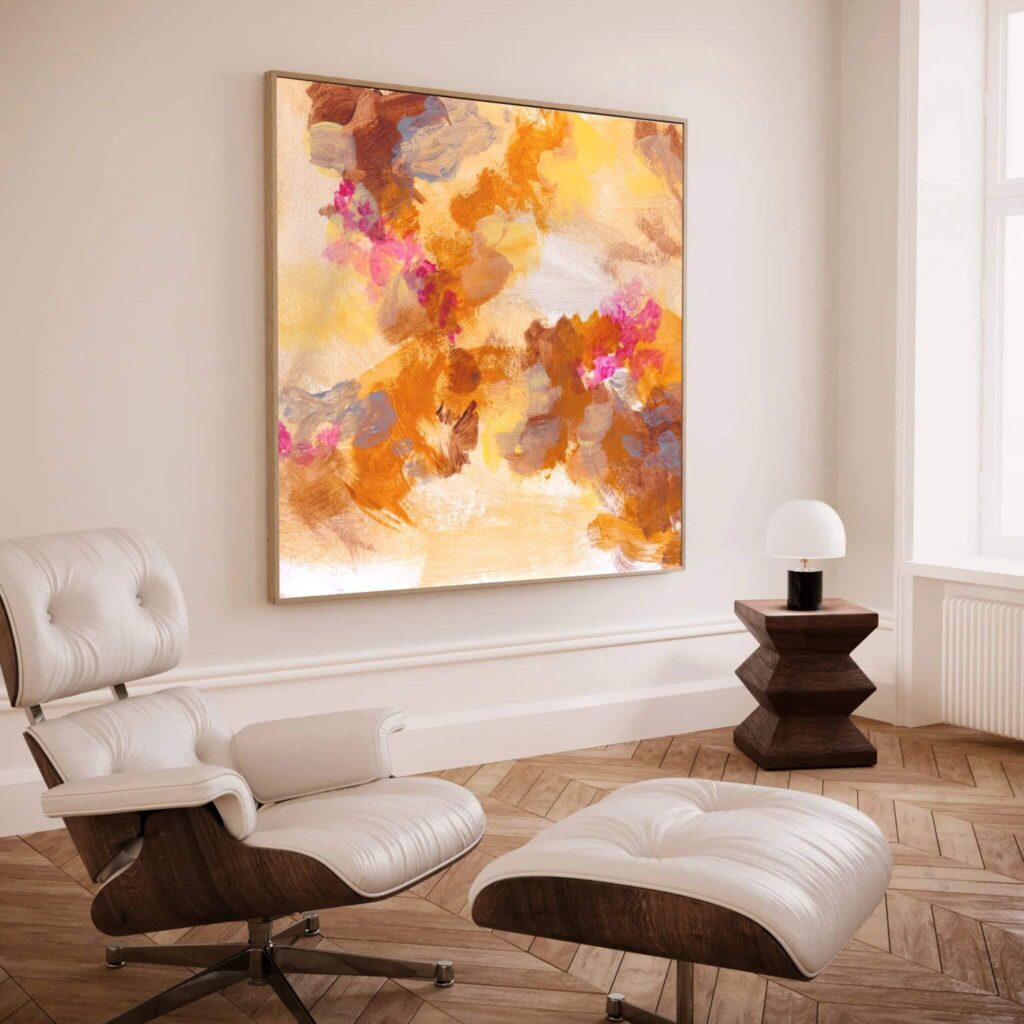
Collector's Vault
Curated canvas prints created from my original works—each one designed with emotional resonance and sustainable materials. Ideal for those creating meaningful spaces across the UK.
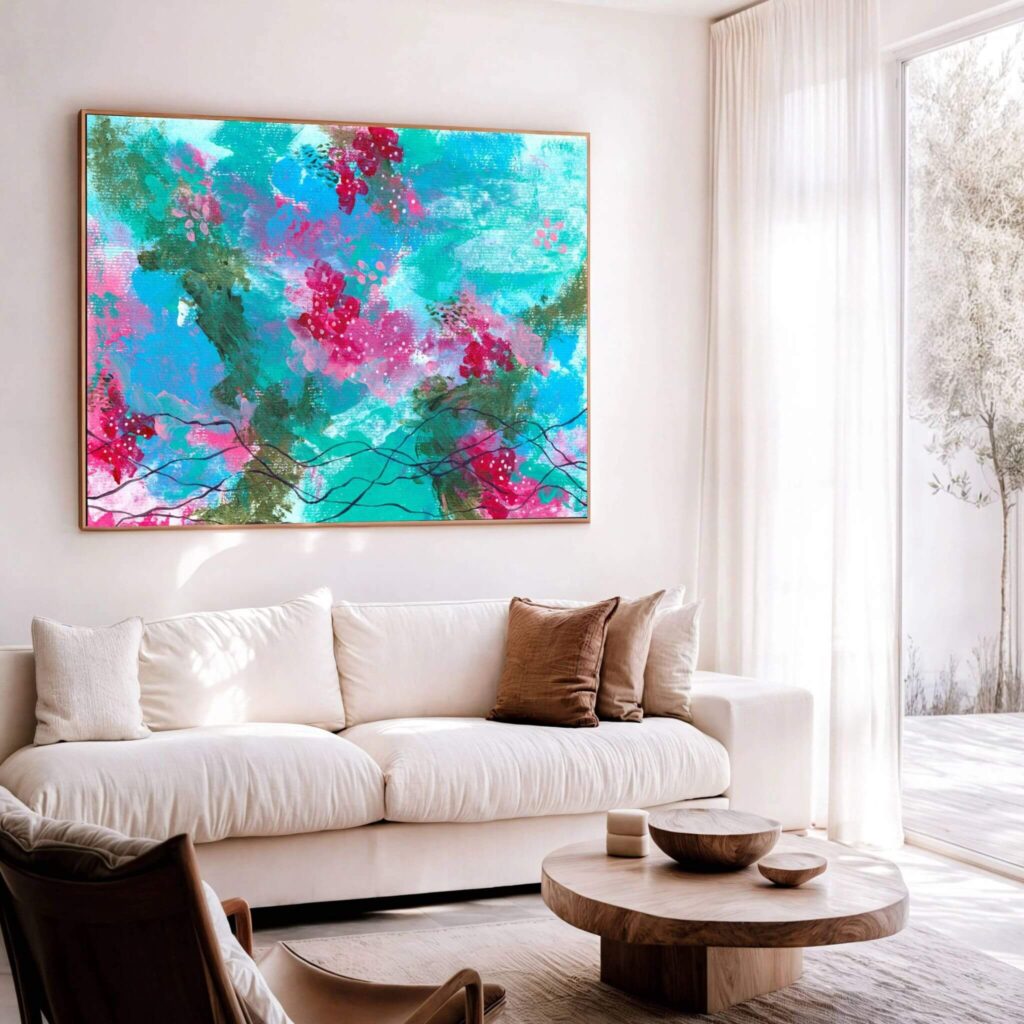
Soul on Canvas
Private commissions created from your story, your chapter, or your emotional intent. Made by hand. Printed once. Made to hold space for years to come.
The Last 10
Ultra-limited hand-embellished canvas works. Quietly released. Made to elevate, ground, or quietly command.
Creating a Legacy Through Curation
Art isn’t always passed down because of its market value. It’s passed down because it carried meaning. And when you curate with intention, you’re shaping an emotional legacy, something that outlasts furniture, trends, and even words.
Commissioned work becomes a marker in a family timeline.
Your walls begin to hold the emotional language of your life.
Your home tells a story without ever needing to explain it.
This isn’t about having a “collection.” It’s about having a companion. And in time, your art becomes part of the emotional architecture of your life, something that others will feel, even if they don’t know the story behind it.
Art That Changes More Than Walls
If you’ve ever stood in front of a piece and felt something shift in you, even slightly, then you already understand. Art doesn’t have to be explained to matter. It has to be felt.
And when it’s chosen with intention, placed with care, and created from emotional depth, it becomes more than beautiful. It becomes useful. Essential. A quiet presence that holds you, not for show, not for guests, but for the version of you that doesn’t always get a voice.
Whether you’re curating for healing, for anchoring, or for the sheer joy of remembering who you are, abstract art has the capacity to transform more than the space. It can quietly reshape the way you live inside it.
And that’s where the real luxury begins.
